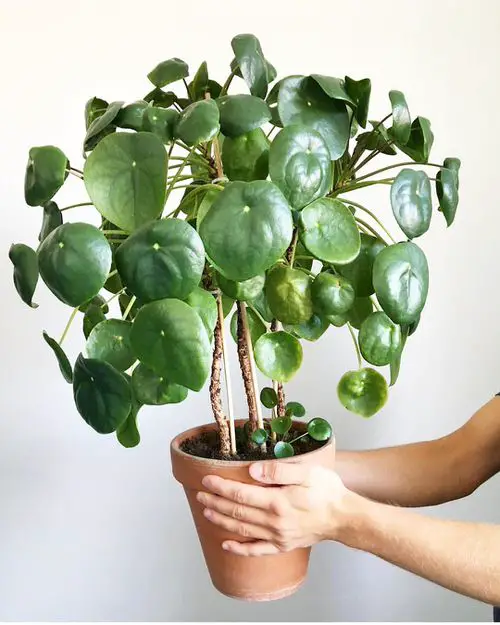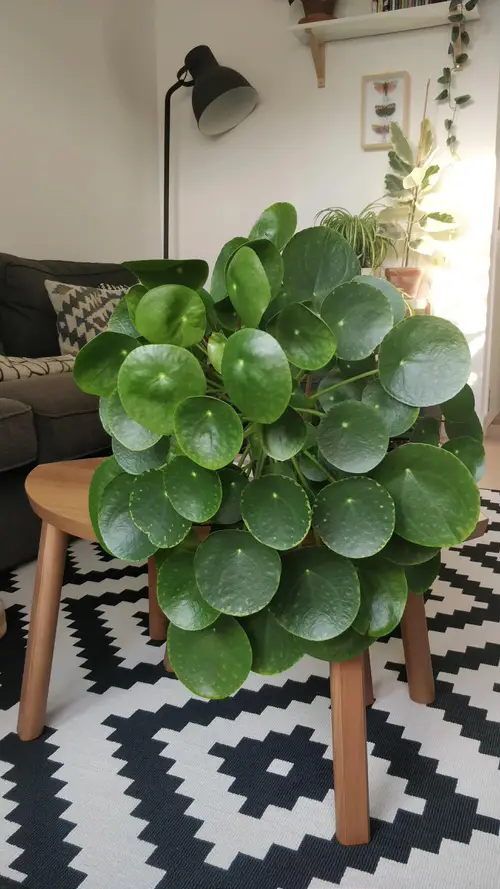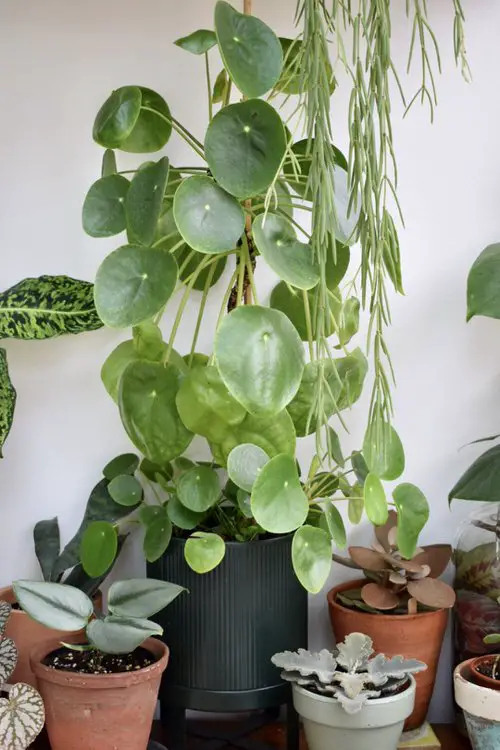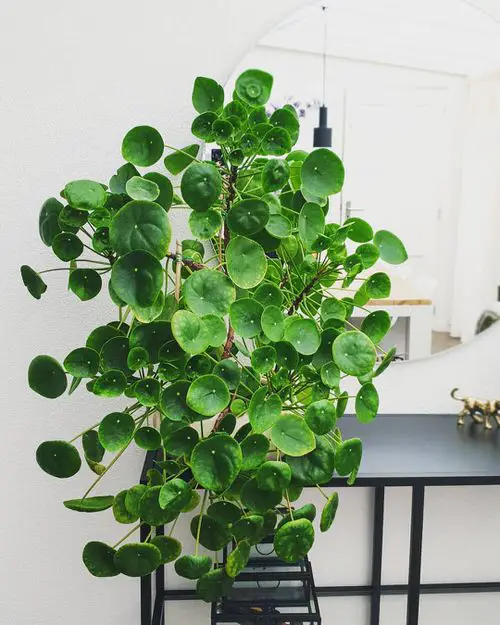Chinese Money Plant is a symbol of good luck and friendship! If you too want to grow it, here’re all the details on Pilea peperomioides Care!
Pilea peperomioides, commonly known as a Chinese Money Plant or the Pancake Plant, is fast-growing and easy to maintain as long as you know everything about the Pilea peperomioides Care!
Check out our Article on Growing Pilea Silver Tree here
Pilea peperomioides Plant Profile
Noted for their coin-shaped, round green leaves, this beautiful specimen holds a special place in the Chinese gifting culture. The air-purifying, mood-enhancing, anti-stress, and low-maintenance properties of this plant, make it a must-have for homeowners.
You can display this cute plant on your working desk or coffee table for fresh, tropical vibes.
Botanical Name: Pilea peperomioides
Pilea peperomioides Propagation
Propagating Pilea Plant is easy. You’ll find little plantlets growing in the pot around the mother plant once it’s mature enough. Take them out, carefully separating the roots from the mother plant, and plant them directly in a well-draining medium.
To grow the plantlets in water, put them in a mini glass, ensuring their leaves are not touching the water. Keep the glass in bright indirect sunlight. Growing those baby Pilea peperomioides in water will help them develop more roots in the next 2-3 weeks.
Learn about Growing Pilea Peperomioides in Water here
Ideal Pot Size for Pilea peperomioides
A pot size of 6-8 inches is best to start the Pilea plant. You can re-pot it once in 2-3 years, depending on the growth, into one size bigger pot than the old one.
Requirements for Growing Pancake Plant
Sunlight
Put the pot in bright indirect light, away from direct sunlight. However, exposure to a couple of hours of mild morning sun is beneficial for the Pancake Plant. Its leaves grow bigger and flat in ample overhead light.
A spot near the North or East facing window would be an apt choice. Its leaves grow bigger and flat in ample overhead light.
Temperature & Humidity
Alike most Pilea varieties, the ideal temperature range for the Pancake Plant is 55-85 F(13-28 C). Do not let the temperature fall below 50F or 10C. Areas experiencing higher degrees than 90F or 32 C will find shriveled leaves with brown edges.
Also, the plant enjoys high humidity levels of 60-70%. Make sure to use pebble trays or humidifiers on drier days.
Soil
Pilea peperomioides care is pretty easy; all you need is a well-draining potting mix. The ideal Chinese Money Plant soil mix recipe must include sandy-loamy soil amended with a handful of perlite or vermiculite for proper drainage.
You may also add coco peat or coco fiber for an additional boost.
Water
Don’t overcare! Too much love for the water can kill your beautiful specimen. Always let the topsoil dry out a bit before watering again. Overwatering can be fatal to the Chinese Money Plant.
Find out the Best Tiny Houseplants here
Pilea peperomiodes Care

Fertilizer
Pancake Plants are not heavy feeders, and you need not bother fertilizing them often. However, you can dilute an all-purpose liquid fertilizer to one-fourth its strength and give your Chinese Money Plant a good shower every 4-6 weeks during the spring.
Pests and Diseases
Though the Pilea peperomioides care is easy and doesn’t need much maintenance, be careful with spider mites, mealybugs, aphids, and scales.
Root rot is another issue that occurs due to overwatering!
Look at the Best Pilea Varieties here
Common Pilea peperomioides Problems
- Droopy Leaves: This might be due to low watering and sunlight. Check the soil level with your finger, and never let it go too dry between watering intervals. Provide 7-8 hours of bright, indirect light to the plant.
- White Spots: These happen due to the mineral residue of tap water. Either avoid tap water or let it sit overnight before watering the plant.
- Brown Spots: This might simply be the old leaves of the plants going brown due to their age. They’ll eventually fall off after turning crisp.
- Curling Leaves: Improper sunlight causes the leaves to curl outwards towards the light source. To avoid this, rotate your plant every week. The high temperature in the room is the reason behind the leaves curling inwards.





